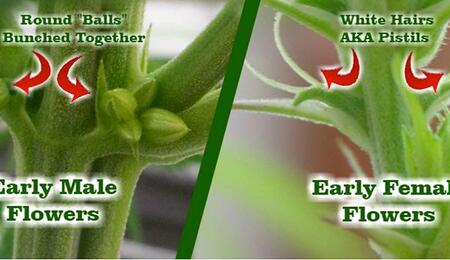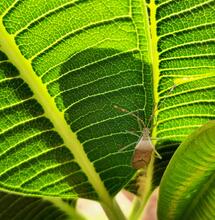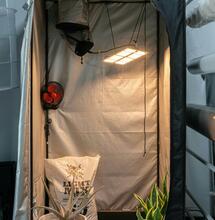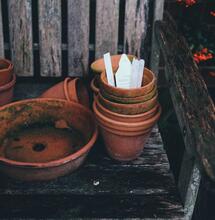Preparing Your Outdoor Grow For Flowering

By now, your plants should be well into the vegative stage of their growth cycle. Some strains may have started to flower already. This is a very important time for your grow, and using the right techniques now can massively increase the final yield from your plants. By using the right nutrients, at the right times, and using techniques like “Low Stress Training” to allow more light to get to your plant, it will be able to grow faster and stronger throughout the flowering period. Properly preparing the plants for flower, will not only increase the yield and quality of your cannabis grow, but it will also keep the plants happy and healthy for the rest of the grow cycle. A healthy plant will be able to fight off bugs, and suffer less stress in harsh conditions, both of which can be problems when growing outdoors.
Topping and LST
When cannabis is grown indoors, growers tend to “top” their plants to ensure they do not grow too tall. When you grow outdoors, height isn't always an issue, but that doesn't mean you should not top your plants.
Topping is when the top of the plant is cut off at the main stem. There are a few reasons for doing this. One of course, is to reduce the height of the plant, to make sure it doesn't grow too big.
Another, is the hormones in the plant will change, and direct more energy to the side shoots instead of one main cola. This can be beneficial in many ways. Not only will you get more even sized buds instead of one huge cola and many side buds, but because the plant will not have that one huge cola, she will be far less susceptible to mould and rot.
If a bud is too big, stale air and moisture can get trapped inside it, and this will cause mould spores to germinate causing bud rot. To prevent this, topping is a good option, but also, you can low stress train your plants to allow more air to flow around it. This can be very helpful if the plant is bushy.
LST (Low Stress Training) is when a grower ties the plant down in place, to control the direction of the growth. As branches grow upwards, they can easily block bud sites and other leaves from absorbing as much sun as they can. The more sunlight your plant can absorb via the leaves, the more it can photosynthesise. So the more light you can get to your plant, the more food it can process, and the bigger it will grow.
By tying the side shoots down, and keeping them as vertical as possible, you not only allow more light into the plant, but you also allow more air to flow around it when the wind blows. This will massively reduce the chance of mould arising on your plants.
This should all be done in late veg, or early flowering stage of the grow. As flowers start to form, the branches become a lot stiffer and can be broken easily. Stop any training when you see buds starting to grow.
Male or Female?
If you havent bought feminsed seeds, you will need to check the sex of your cannabis plant. Unless you're breeding cannabis, male plants are really no good to you, and will only pollinate the females. This is something you don't want, as your buds will be full of seeds.
If you find a male plant, it must be removed from your grow area immediately! A male flower will look like a ball on a small stalk, and grow into something that resembles a bunch of grapes. A female flower will show a white hair protruding out of a pointy tip.
In some situations, you might come across a “hermie”, which is a plant that displays both male and female parts. These plants should be destroyed too, as they will pollinate themselves and other plants. If you want seedless buds, remove any males or hermies from the grow area as soon as you spot them.
Feeding and Watering your Outdoor Plants
When a cannabis plant flowers, its need for potassium and phosphorus rise dramatically. The plant uses these nutrients to build the flowers, and produce the energy it needs to build them. Most growers at this stage will increase the amount of “PK” the plants are given.
If your soil is properly amended in the first place, you may not need to supplement PK. But if your plant starts to show signs of phosphorus or PK deficiency, you should add some to the medium.
Use liquid bone meal, bat guano, or even compost to add some extra organic nutrients to your soil. Or, if you are growing with salt based nutrients, there are many PK boosters for you to choose from.
You must be careful not to give too much! You can easily over feed your plant and damage the roots. Any increase in nutrients should be done gradually.
When growing outdoors, your plants will receive water from the rain. But, if it goes for longer than 7 days without rain, your plants may need water. If your plant becomes dehydrated, it will start to wilt, and the leaves will droop badly. There is plenty of water under the ground for the plants to reach, even after a few days of no rain.
If you are growing in pots, then you should water your plants when the soil dries out a bit, but not too much. A good rule of thumb is make sure the top two inches of soil have dried out before watering your plants. Or, lift the pots and see how light it is. If the pot is heavy, there is plenty of water in it, if it is light, then you should water it.
If You Have Problems or Questions
There are many things that might arise during your grow, and you may need some help and advice on how to overcome them. You should sign up to our cannabis growers forum. Not only will you find the friendliest forum on the internet, but you will also find many growers who are always eager, and happy to help.
You don't have to do this alone, come and share your love of growing with us, at Percysgrowroom.com
Good luck with your flowering cycle! We will see you in the next issue, when we tell you the best ways to make sure your plant is ready for harvest, and how to prevent bud rot.



.png)